Abstract
On July 7th, 2023, Xuhua Wang's research group at Zhejiang University School of Medicine published a study titled Porous microneedle patch with sustained extracellular vesicles delivery mitigates severe spinal cord injury in Nature Communications. This team fabricated a porous microneedle patch based on mesenchymal stem cells (MN-MSC) containing mesenchymal stem cells and microneedle arrays for delivering extracellular vesicles to spinal cord injury sites for treatment. The microneedle array with mechanical strength matching that of the spinal cord can prevent damage to the surrounding spinal cord tissues. The porous microstructure of the microneedles facilitates extracellular vesicle delivery. Mesenchymal stem cells can continuously provide extracellular vesicles. This study provides new insights into the treatment of spinal cord injury.
The extracellular vesicles secreted by mesenchymal stem cells have become a promising treatment to inhibit neural inflammation triggered by spinal cord injury. However, how to effectively deliver extracellular vesicles to the spinal cord injury site while minimizing damage to the surrounding tissues or axons remains a challenge. Therefore, a patch was proposed for treating spinal cord injury through sustained delivery of extracellular vesicles. This team evaluated the efficacy of a porous microneedle patch based on mesenchymal stem cells in a rat model of spinal cord injury and found it could improve the microenvironment in the injured tissue, promote angiogenesis, and protect residual neural tissues. Importantly, sustained delivery of extracellular vesicles for at least 7 days led to significant functional recovery. The porous microneedle patch based on mesenchymal stem cells developed by this team brings hope for the rehabilitation of patients with spinal cord injury.
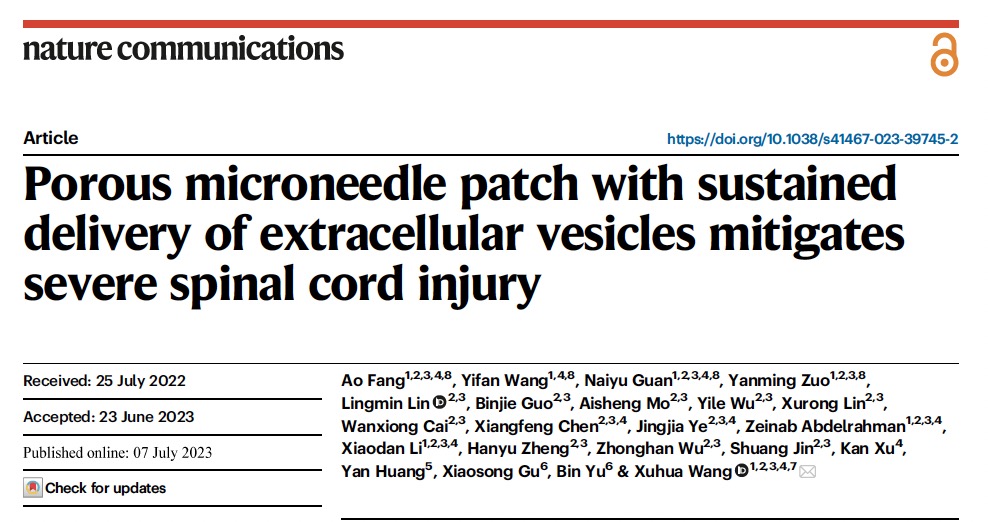
Research background
Spinal cord injury is a central nervous system trauma caused by trauma, with an estimated global incidence of 15-40 case per million people. This results in an annual global economic burden of up to 40 billion dollars [1]. Repairing spinal cord injuries remains a key challenge, as currently no method can completely cure them. Various approaches exist to repair and improve spinal cord injury outcomes, including the use of stem cells, particularly mesenchymal stem cells (MSCs). Studies demonstrate MSCs have a therapeutic effect on spinal cord injuries, especially via their secreted extracellular vesicles (EVs), which are thought to underlie the therapeutic benefits. A disadvantage of intrathecal administration of MSCs or EVs is that most migrate into the blood or other tissues, with very few reaching the central nervous system. Recently, immobilizing EVs in peptide-modified hydrogels was shown to improve spinal cord injury treatment versus traditional delivery methods by increasing EV efficiency [2].
However, the delivery efficiency and duration of this hydrogel method are insufficient to exert the optimal therapeutic effect [3]. Treating the neural inflammation and apoptosis caused by spinal cord injury requires sustained delivery for at least 1 week. Unfortunately, this hydrogel method cannot provide sustained delivery of adequate extracellular vesicles over this timeframe. Addressing this limitation is an urgent problem needing solved in spinal cord injury treatment. Furthermore, directly transplanting mesenchymal stem cells or extracellular vesicles into the spinal cord injury site risks damaging surrounding healthy tissues, potentially causing unpredictable side effects [4]. Therefore, developing a device that can efficiently and continuously supply extracellular vesicles over an extended period plays a crucial role in treating acute spinal cord injury.
Research results
As shown in Figures 1 and 2, the porous microneedle patch based on mesenchymal stem cells developed in this study has good nanoscale sizes (~100 nm), biocompatibility, mechanical properties, and the ability to efficiently and sustainably deliver extracellular vesicles in vivo. In vivo, the mesenchymal stem cells can survive for a sufficiently long time at the injury site to achieve the optimal treatment time for spinal cord injury. The research team proposed this approach to improve the therapeutic effect without the need for direct intrusion of mesenchymal stem cells into the spinal cord. The microneedle patch can sustainably deliver extracellular vesicles in vivo. On day 7 after implantation, the cells still have good viability and the released extracellular vesicles can be successfully delivered to the injured area of the spinal cord, achieving sustained treatment of spinal cord injury, as shown in Figure 3.
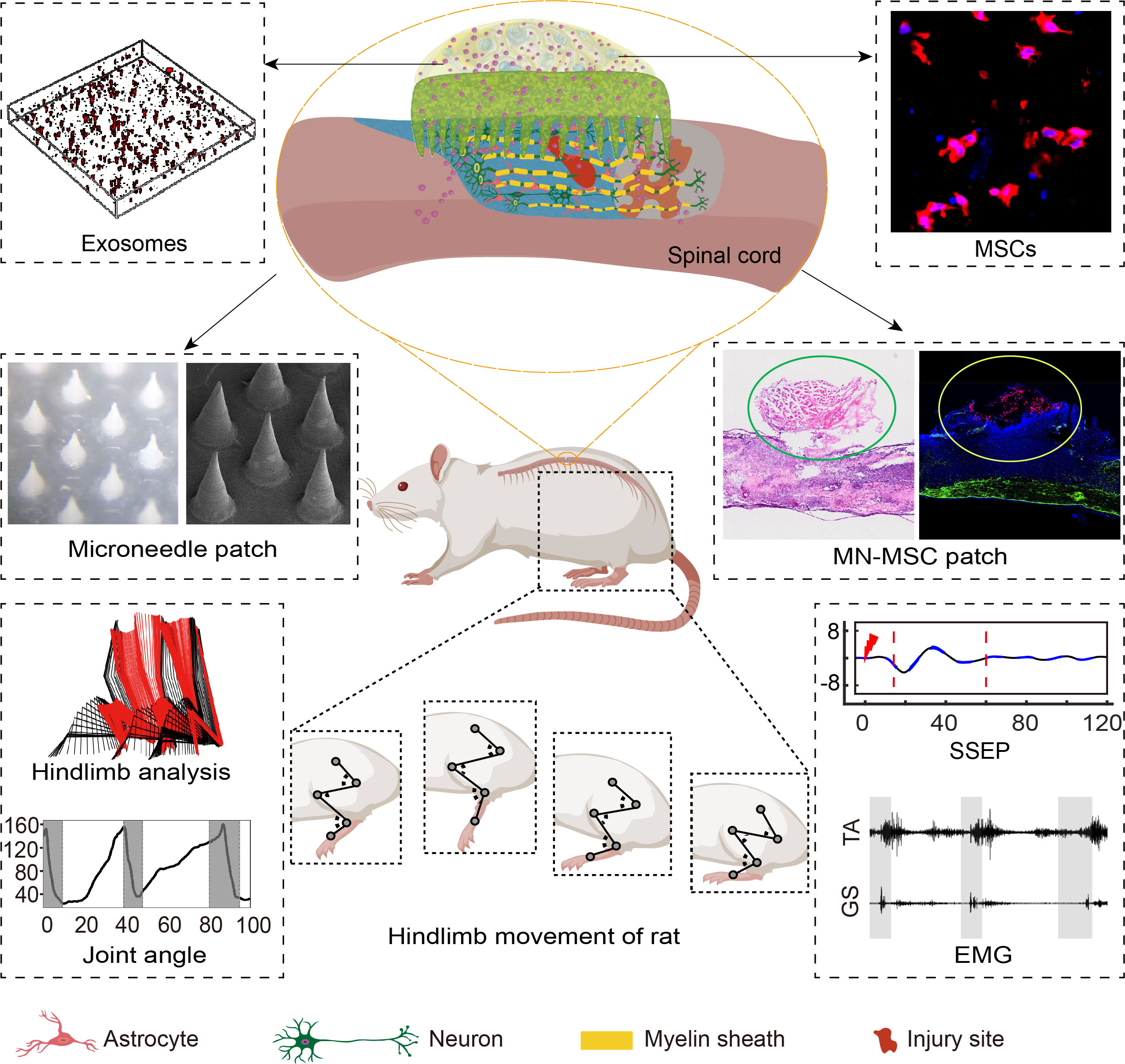
Figure 1. Schematic of implantation of the porous microneedle patch based on mesenchymal stem cells at the spinal cord injury site.
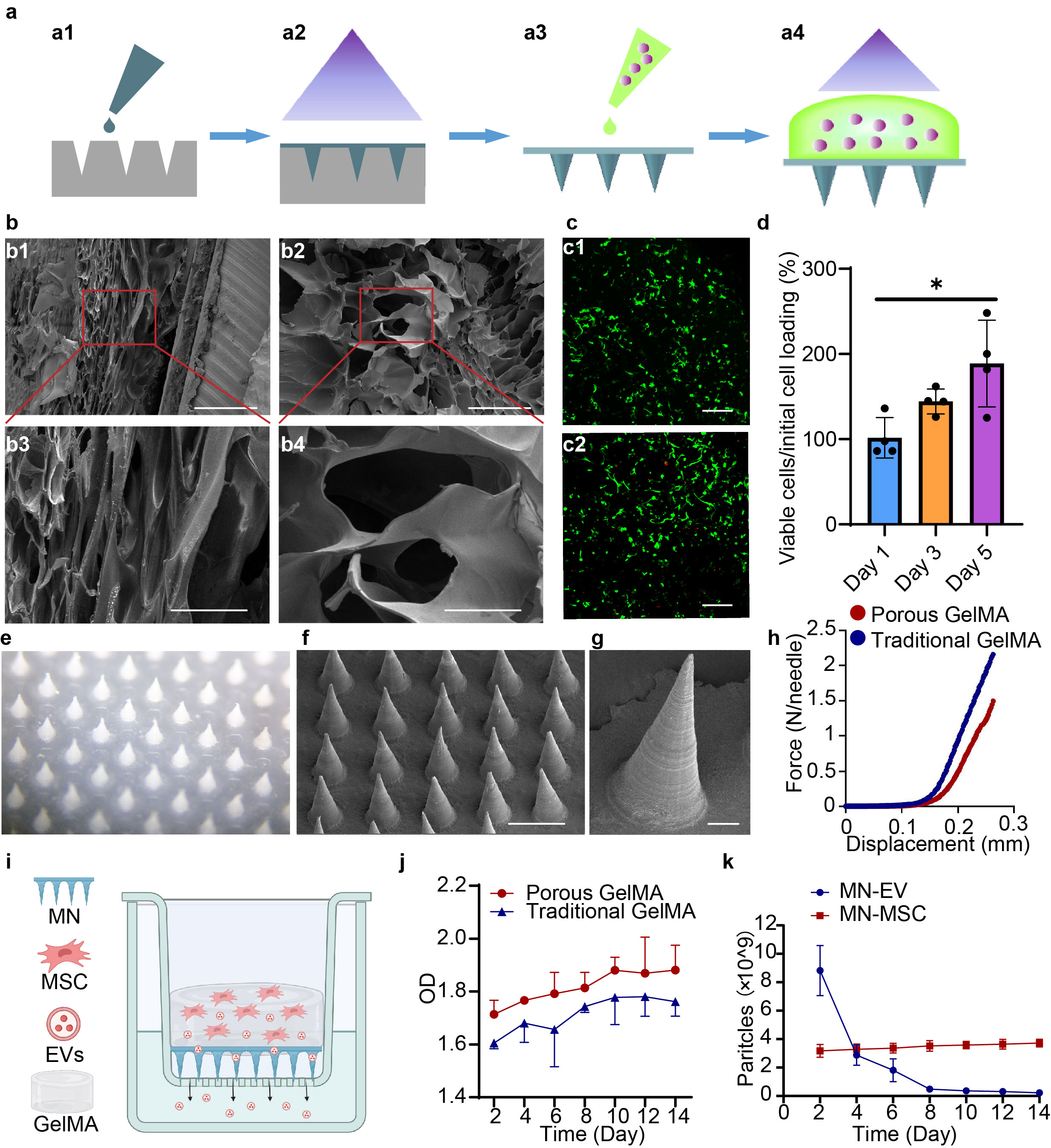
Figure 2. Characterization of the porous microneedle patch based on mesenchymal stem cells.
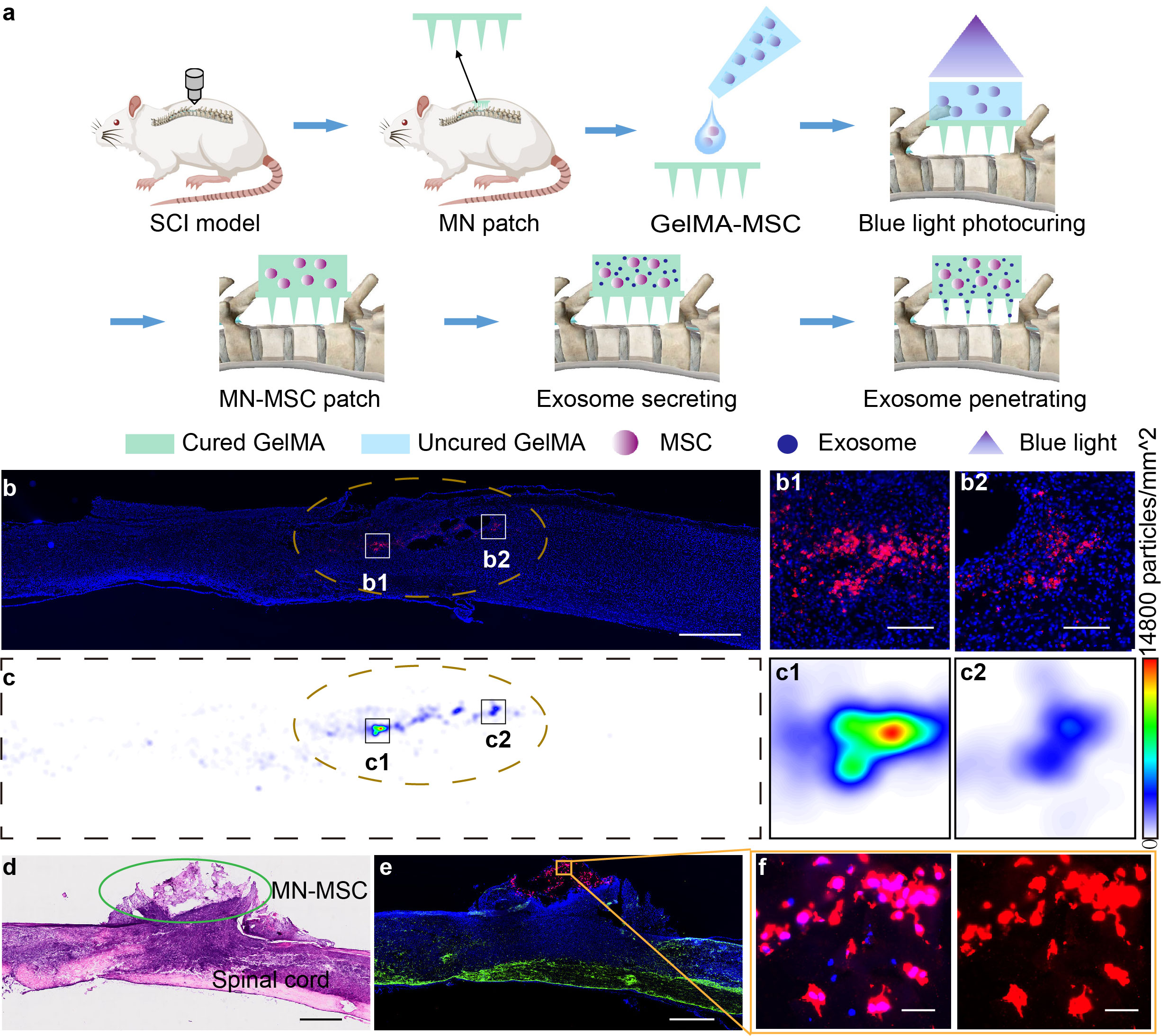
Figure 3. Sustained extracellular vesicle delivery therapy by the porous microneedle patch based on mesenchymal stem cells at 7 days after implantation.
After validating the repair function of the porous microneedle patch based on mesenchymal stem cells, the team conducted a more systematic evaluation of the efficacy of the designed porous microneedle patch based on mesenchymal stem cells. In the treatment group, by comparing gene expression and tissue morphology (Figures 4-5), it was found that although MN-EV and Gel-MSC had some therapeutic effects, the rats in the MN-MSC group had more significant therapeutic effects and achieved more significant functional recovery (Figures 6-7), closer to normal rats. These results indicate that the porous microneedle patch based on mesenchymal stem cells designed in this study can exert neuroprotective effects and help rats with spinal cord injury achieve eventual motor functional recovery.
This study not only developed an efficient, sustained extracellular vesicle delivery microneedle patch, but also promoted functional recovery after spinal cord injury. This provides new insights and methods for the treatment of spinal cord injury using extracellular vesicles. The results demonstrate that one of the effective methods for spinal cord injury treatment is sustained and effective delivery of extracellular vesicles to the injury site to alleviate inflammation and protect neural tissues. This study constructed a porous microneedle patch based on mesenchymal stem cells, which can continuously deliver vesicles from mesenchymal stem cells to reach the injured spinal cord tissue, avoiding the one-time loss of extracellular vesicles. The microneedle portion of the patch is made of porous GelMA hydrogel with good biocompatibility, which can remain on top of the lesion tissue for a long time and maintain sustained release until the optimal treatment time, achieving the maximum efficacy of mesenchymal stem cell vesicles.
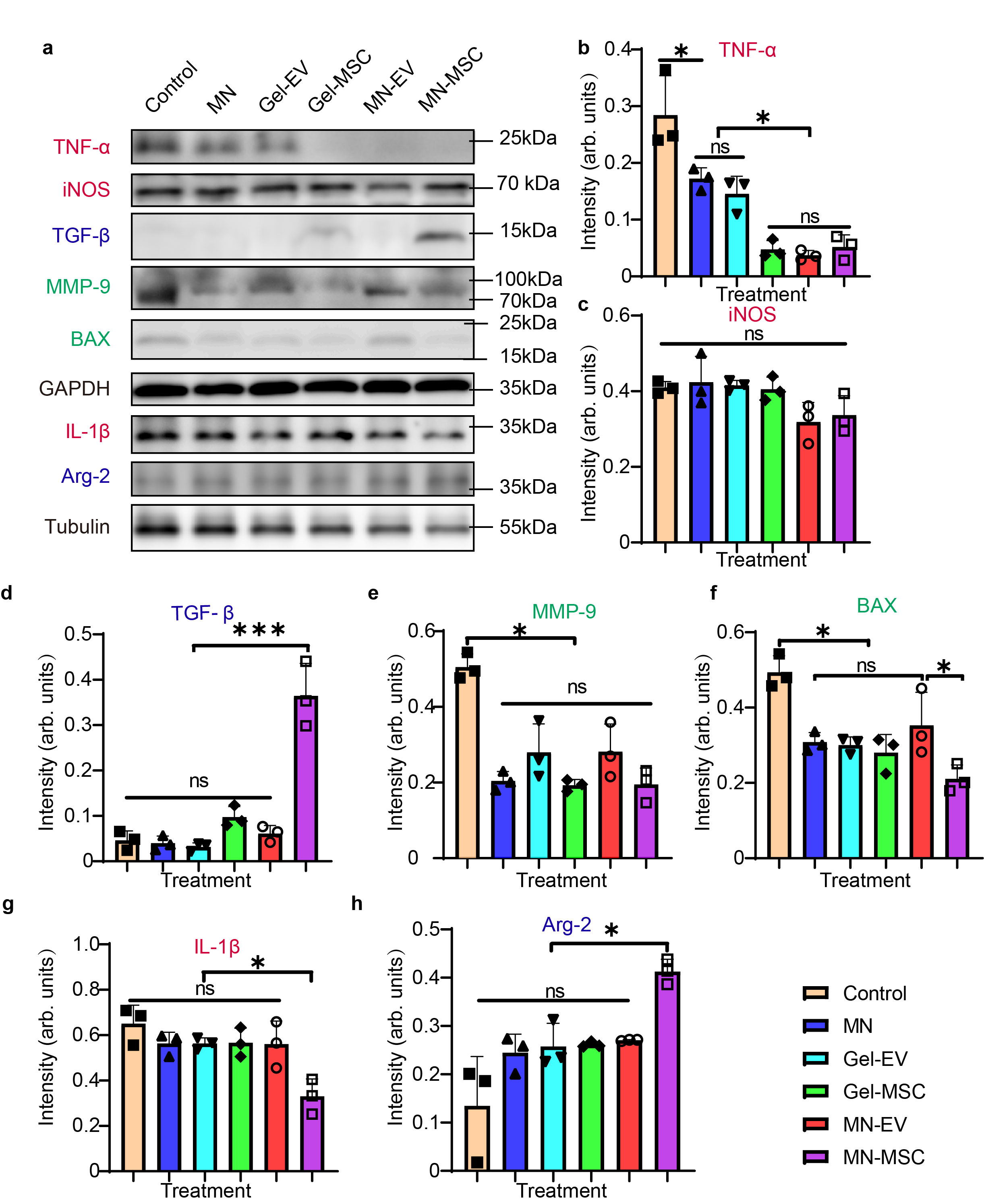
Figure 4. Gene expression analysis of treatment for spinal cord injury using the porous microneedle patch based on mesenchymal stem cells.
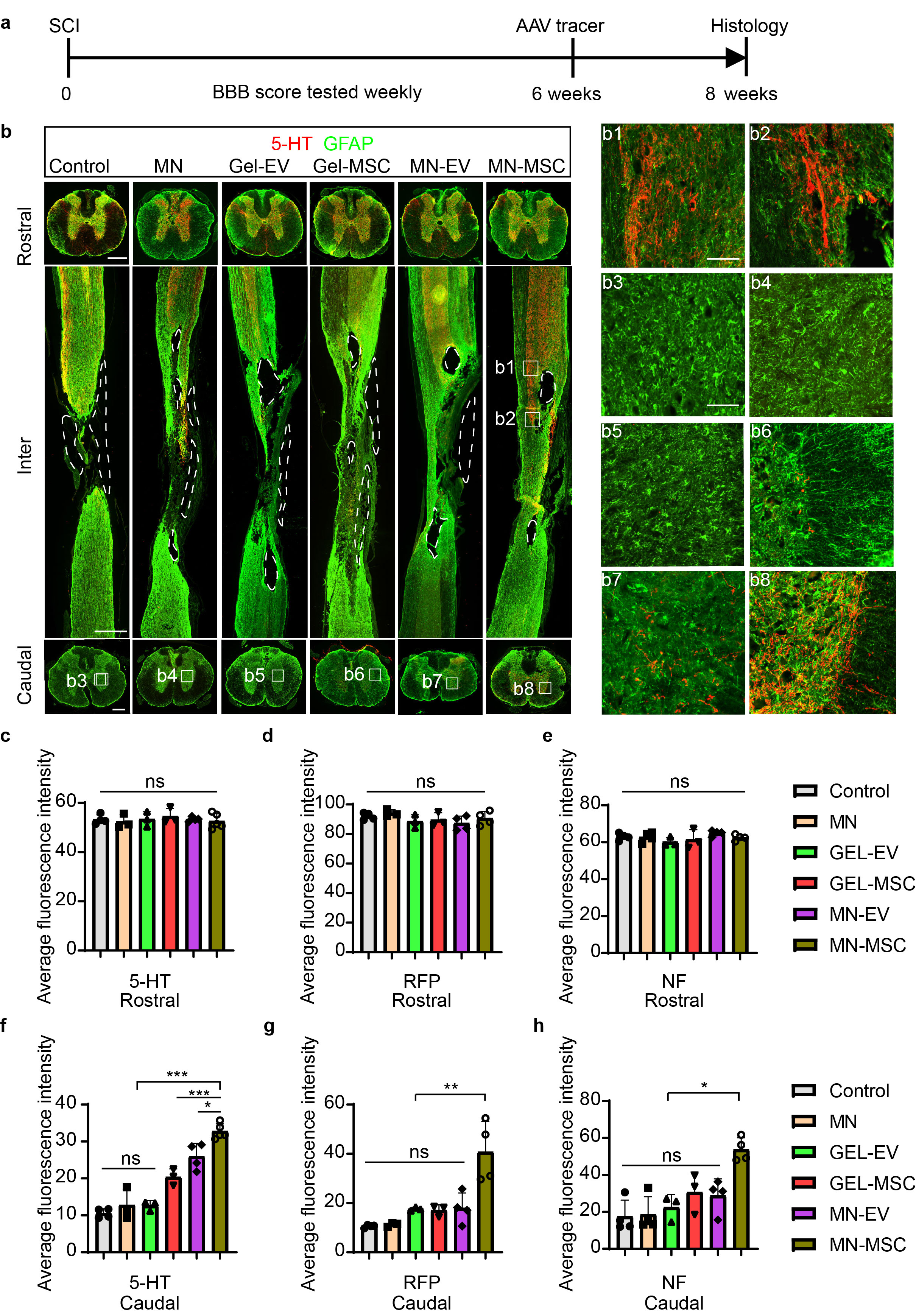
Figure 5. Protective effects of the porous microneedle patch based on mesenchymal stem cells on spinal cord injury.
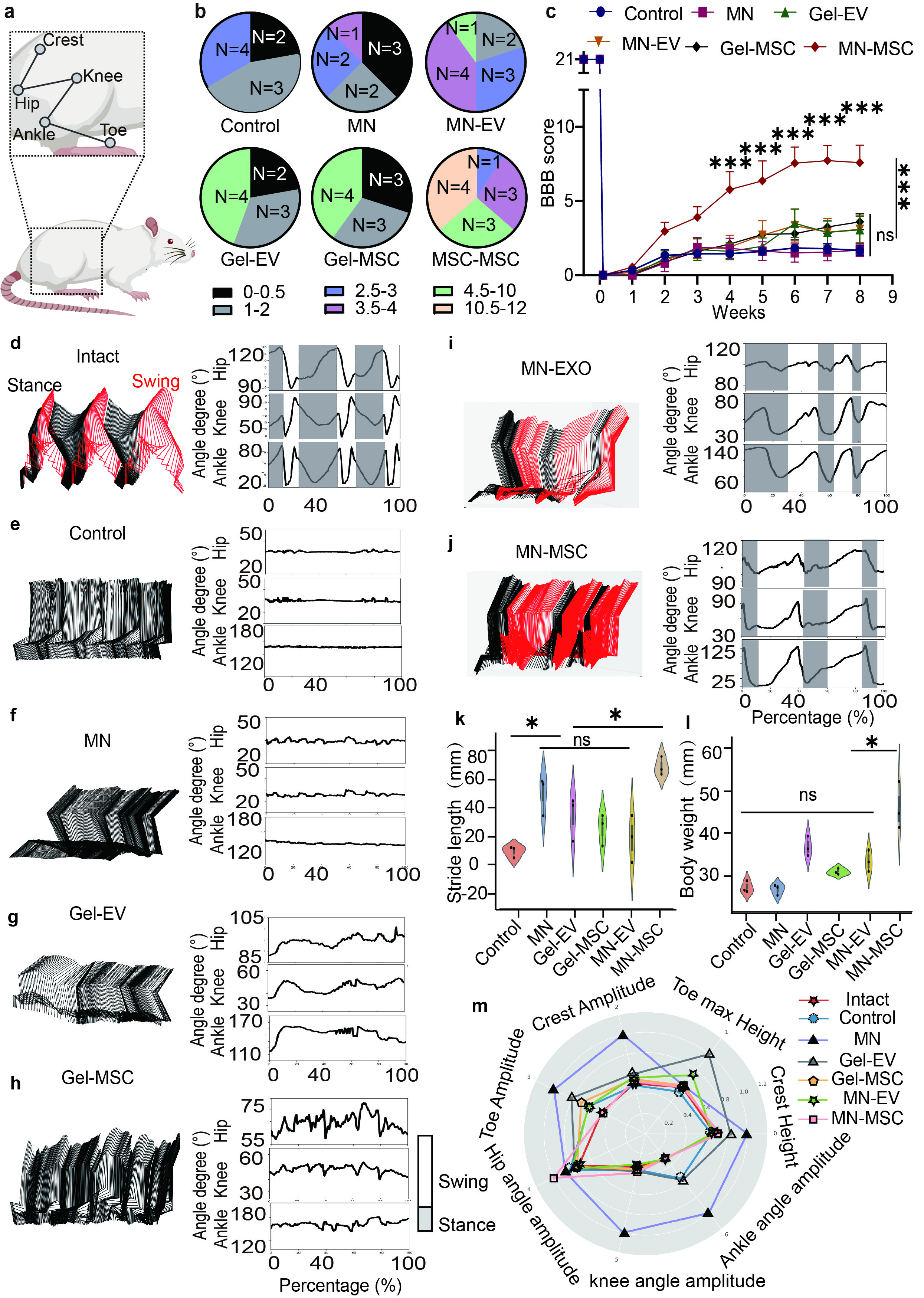
Figure 6. The porous microneedle patch based on mesenchymal stem cells improves recovery of hindlimb function in rats with spinal cord injury.
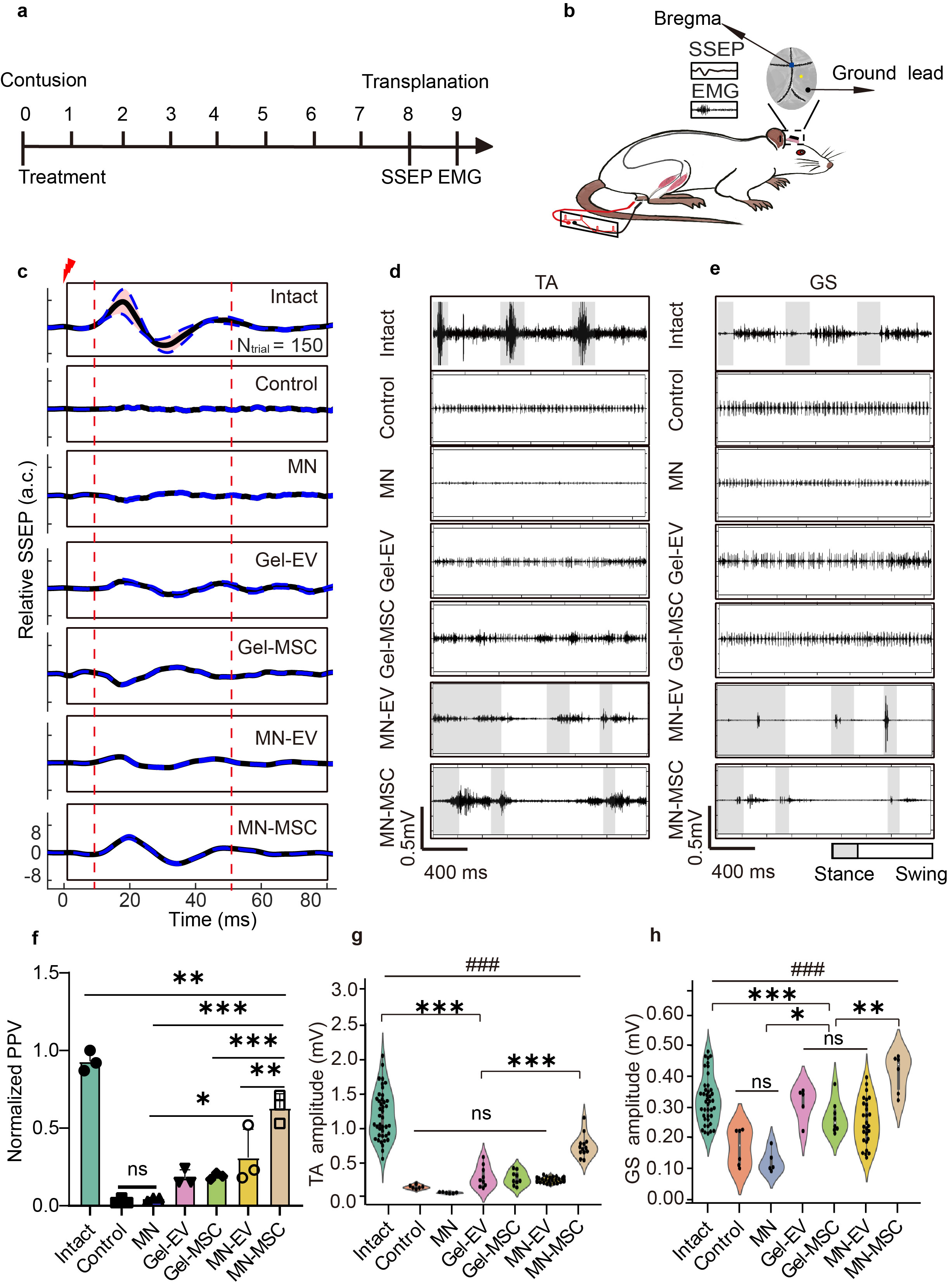
Figure 7. Electrophysiological experiments show that the porous microneedle patch based on mesenchymal stem cells has good control over rat muscles.
Research outlook
While the current research team has achieved promising therapeutic effects, there remains ample opportunity to further advance microneedle patch development for spinal cord injury treatment. In subsequent research, Professor Wang's team has independently developed a high optical absorption cross-linking initiator that enables more precise two-photon printing of personalized porous microneedles, with printing accuracy far surpassing that of conventional commercially available initiators. This breakthrough is anticipated to further enhance the therapeutic efficacy of microneedle patches and achieve more comprehensive functional repair.
Moving forward, the team aims to continue optimizing the design and manufacturing of personalized MSC porous microneedle patches, working to successfully translate a safe and efficient spinal cord injury treatment microneedle patch to the clinic within the next few years for the benefit of more patients with spinal cord injuries.
Link to original paper:https://www.nature.com/articles/s41467-023-39745-2
Brief introduction of corresponding author
Xuhua Wang is a researcher at the School of Brain Science and Brain Medicine at Zhejiang University. His lab primarily focuses on developing therapeutic agents and drug delivery systems for central nervous system diseases. His research interests include large language models, AI-empowered drug design, and AAV gene delivery vector engineering. More information can be found on his lab homepage at www.zjuwanglab.com.
Professor Xuhua Wang from the School of Brain Science and Brain Medicine at Zhejiang University is the corresponding author. Dr. Ao Fang is the first author and the co-first authors are Yifan Wang, Guonai Yu, and Yanmig Zuo. This research was strongly supported by Prof. Xiaosong Gu from Nantong University and his team. We sincerely thank Prof. Shumin Duan from Zhejiang University for providing strong support to facilitate this project. This work was supported by the Major Program of National Science and Technology Innovation 2030 for “Brain Science and Brain-like Research”, the National Natural Science Foundation of China, the Zhejiang Outstanding Youth Science Foundation, the Fundamental Research Funds for the Central Universities, and other grants.
Reference
1a.Ahuja, C.S. et al. Traumatic spinal cord injury. Nat Rev Dis Primers 3, 17018 (2017).
1b.Olson & Lars. Medicine: clearing a path for nerve growth. Nature 416, 589 (2002).
2. Li L, et al. Transplantation of human mesenchymal stem-cell-derived exosomes immobilized in an adhesive hydrogel for effective treatment of spinal cord injury. Nano letters 20, 4298-4305 (2020).
3. Zhang S, Chuah SJ, Lai RC, Hui JHP, Lim SK, Toh WS. MSC exosomes mediate cartilage repair by enhancing proliferation, attenuating apoptosis and modulating immune reactivity. Biomaterials 156, 16-27 (2018).
4. Mukherjee N, Adak A, Ghosh S. Recent trends in the development of peptide and protein-based hydrogel therapeutics for the healing of CNS injury. Soft Matter 16, 10046-10064 (2020).




 Location :
Location : 

